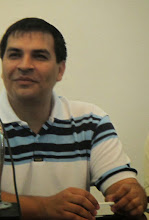Samanta Schweblin, Rodrigo Hasbún, Federico Falco, Diego Trelles Paz, Paola Tinoco y Antonio Ortuño son seis autores jóvenes que, a pesar de su diversidad estética, resumen el estado del nuevo cuento hispanoamericano: sus historias están marcadas por el cine, la música y la cultura popular, con buen oído para el habla urbana y más proclives a escenificar que a indagar temáticas y formas. Estos nombres integran una camada que parece no sufrir una gran “angustia de las influencias” ante el boom y que resuelve estas cuestiones con formidable humor metaliterario, como en el cuento “Requiem”, de Slavko Zupcic, donde el narrador comprende que siempre que roba un libro provoca que muera su autor. También coinciden en su gusto por escritores de la región como Julio Ramón Ribeyro o Roberto Bolaño; en no plantear un quiebro explícito como lo hiciera en los 90 la generación McOndo; en su tendencia a retratar las nuevas formas de violencia en el continente, sin desdeñar el lirismo ni la ironía, y en que, cuando optan por la experimentación, buscan al mismo tiempo esa “diversión inteligente” que reclamaba Somerset Maugham en toda obra literaria.
Nacida en 1978, la argentina Schweblin se estrenó con El núcleo del disturbio y Pájaros en la boca, dos libros que la pusieron a la cabeza de una nueva generación de cuentistas. Que no parezca contemporánea de sus colegas más afectos a lo autobiográfico, como ha señalado más de un crítico, es un riesgo que Schweblin conjura con talento y con una ficción imaginativa, incluso “fantástica”. Ella se reconoce heredera de Bioy Casares y explora anomalías propias de Dino Buzzati. Schweblin cree que “cuanto más se acerca un texto a la realidad, más extraño se vuelve” y acaso suscribiría lo que un personaje (el doctor Ottone) le dice a una paciente: “Usted inventa cosas para ocultar otras cosas más importantes”.
La editorial Emecé Argentina ha apostado por otros buenos jóvenes cuentistas de su país, como Oliverio Coelho (1977), Mariana Enríquez (1973) o Federico Falco (1977), quien plasmó en La hora de los monos (2010) nueve cuentos siniestros donde los personajes viven situaciones extremas, incómodas. El boliviano Hasbún (1981) ha dicho que cree en la literatura como medio “para ensanchar y enriquecer la realidad” y que le agobian “el color local excesivo” y la “obsesión de muchos escritores por retratar nuestra sociedad”, lo que se refleja en los cuentos de Cinco (2006), despojados en materia de referencias y lenguaje. “Álbum” es un buen ejemplo: frases cortas, diálogos en estilo directo libre y una narración en tercera persona estructurada como un diario íntimo y con intertítulos de guión de cine. Otras voces emergen en Bolivia, como el poeta Guillermo A. Ruiz (1982), autor de “Las cosas” (cuento que habla de pérdidas y de “la marea sagrada del tiempo”), pero Hasbún es la figura más sólida y visible tras la edición de su novela El lugar del cuerpo. Trelles Paz (1977), uno de los mejores cuentistas peruanos de la promoción de Leonardo Aguirre (1975) o Daniel Alarcón (1977), es también responsable de la rigurosa antología El futuro no es nuestro, en cuyo prólogo dice detectar en los nacidos entre 1970/80 dos temas primordiales: violencia y erotismo, y un tono “desencantado y cínico, indiferente e individualista”.
OTROS NOMBRES A LOS QUE SEGUIR LA PISTA
Paraguay. Nicolás Granada (1979), Javier Viveros (1977), Ever Román (1981)
Uruguay. Daniel Mella (1976), Natalia Mardero (1975)
Chile. Roberto Fuentes (1973)
Colombia. Johann Rodríguez-Bravo (1980-2006)
Bolivia. Giovanna Rivero (1972)
Argentina. Julia Coria (1976), Romina Doval (1973)
FUENTE: http://www.revistamercurio.es/index.php/revistas/691-11ultimas-voces-del-cuento


